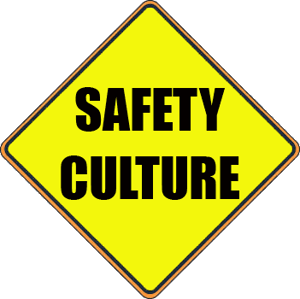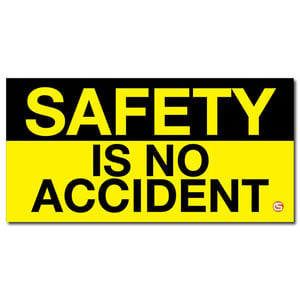By Sara Peters, Fauske & Associates

Over the years, much has been written regarding an employee’s role or responsibility in a company safety program and the influences of safety on the company’s bottom line. The notion of establishing a safety culture within an organization is thrown around in a frequent manner, but what does this really mean?
Wikipedia has defined safety culture as, “The attitude, beliefs, perceptions and values that employees share in relation to safety in the workplace.” The theory, one that has been reaffirmed in multiple articles including this article detailing an example from Alcoa, is that if you make safety the primary goal of the organization and the collaborative responsibility of all who work there, then the organization will be better positioned to thrive in other areas. This is of critical importance because not only do employees benefit from a company that is profitable and well regarded, but ultimately employees and, sometimes even the customers and community have the most to lose when safety is set aside.
Think of a stop sign. The premise is solid – drivers take turns moving through the intersection safely, one at a time. The importance of this is drummed into your head when you learn how to drive. Great process in theory, until you get the driver who feels they don’t need to stop completely, or at all. The result, a process failure due to the actions of the driver who rolled through or drove through their stop sign off turn, therefore putting all the other drivers at unnecessary risk.
This thought seems to be further validated in the class-action lawsuit filed in November 2017 by Anadarko Petroleum Corporation shareholders. The suit cites former employees claiming that the energy supplier “put profits over safety,” resulting in a deadly gas well explosion that nearly leveled a home in Firestone, CO as detailed further in a May Denver Post article, "Former Anadarko Employees Say Safety Sacrificed for Profits in Run Up to Fatal Home Explosion."
According to the article: “The lawsuit alleges that Anadarko paid only “lip service” to safety concerns and slashed money for community relations, safety and remediation after the price of oil fell beginning in the fall of 2014.” This resulted in the customers in this case becoming the losers in the safety game, paying the ultimate price with their lives for an apparent safety fail and culture change on Anadarko’s part.
Now both companies referenced, Alcoa and Anadarko, are large enough that they have obligations to implement certain safety processes required by OSHA and other authorities having jurisdiction, but neglecting to make safety a priority in both instances was a hole in the process that put them at unnecessary risk. Because safety wasn’t at the forefront of the employer or employee’s minds, profit was, accidents occurred that not only affected the company, but the community as well.

OSHA places great weight on the impact management leadership and employee participation has on safety and health programs. In the “10 Ways to Get Your Program Started” section of OSHA’s “Recommended Practices for Safety and Health Programs” they suggest the following simple steps to build a collaborative plan:
1) Establish safety and health as a core value. Tell your workers that making sure they finish the day and go home safely is the way you do business. Assure them that you will work with them to find and fix any hazards that could injure them or make them sick.
2) Lead by example. Practice safe behaviors yourself and make safety part of your daily conversations with workers.
3) Implement a reporting system. Develop and communicate a simple procedure for workers to report any injuries, illnesses, incidents (including near misses/close calls), hazards, or safety and health concerns, without fear of retaliation. Include an option for reporting hazards or concerns anonymously.
4) Provide training... Train workers on how to identify and control hazards in the workplace, as well as report injuries, illnesses, and near misses.
5) Conduct inspections. Inspect the workplace with workers and ask them to identify any activity, piece of equipment, or materials that concern them. Use checklists to help identify problems.
6) Collect hazard control ideas. Ask workers for ideas on improvements and follow up on their suggestions. Provide them time during work hours, if necessary, to research solutions.
7) Implement hazard controls. Assign workers the task of choosing, implementing, and evaluating the solutions they come up with.
8) Address emergencies. Identify foreseeable emergency scenarios and develop instructions on what to do in each case. Meet to discuss these procedures and post them in a visible location in the workplace.
9) Seek input on workplace changes. Before making significant changes to the workplace, work organization, equipment, or materials, consult with workers to identify potential safety or health issues.
10) Make improvements. Set aside a regular time to discuss safety and health issues, with the goal of identifying ways to improve the program.
Additionally, OSHA’s "Safety Pays" page provides some helpful tools and calculators to illustrate the cost of safety and its effects on your company’s bottom line.
At the end of it all, you can have the best process safety plan on paper, but if your management and staff do not subscribe to a safety first philosophy, then that plan is destined to eventually fail. When that happens, work stoppage, property damage, brand reputation corruption and worse yet, litigation and death can follow. Is it worth the risk?
To discuss or for more information regarding chemical process process and plant safety testing, engineering and consulting, contact us at info@fauske.com or 630-323-8750. www.fauske.com.

